.jpg)
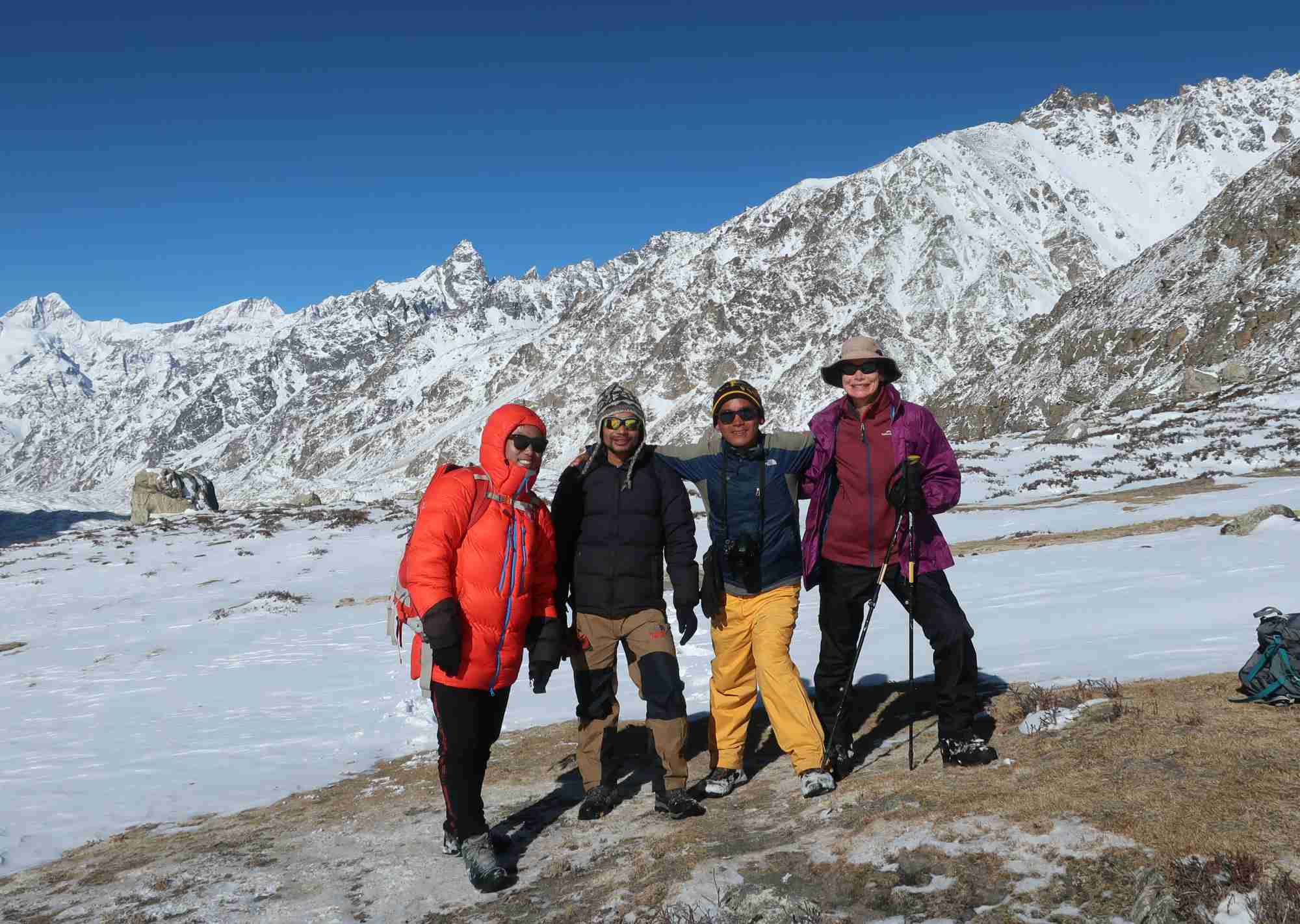
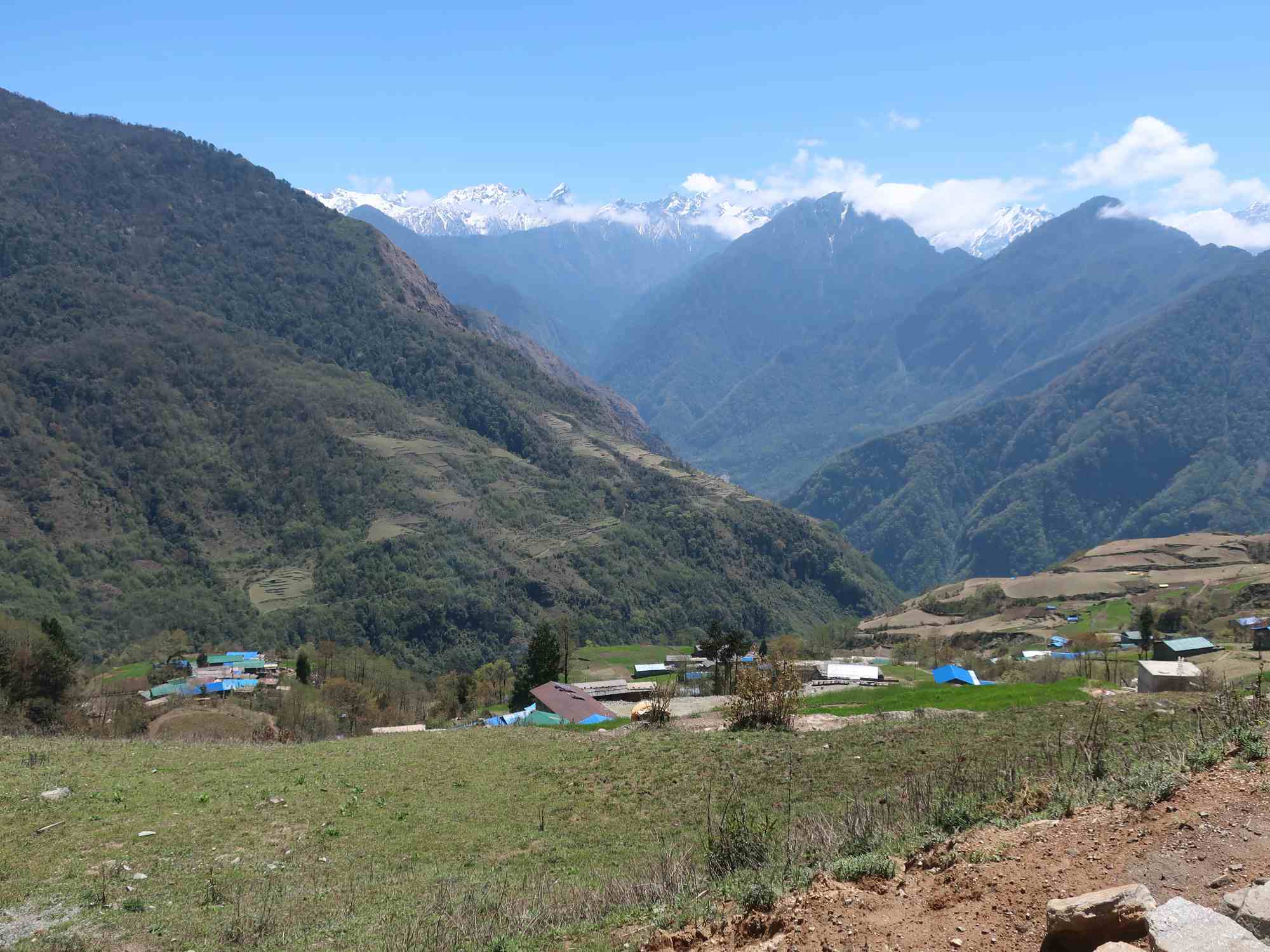
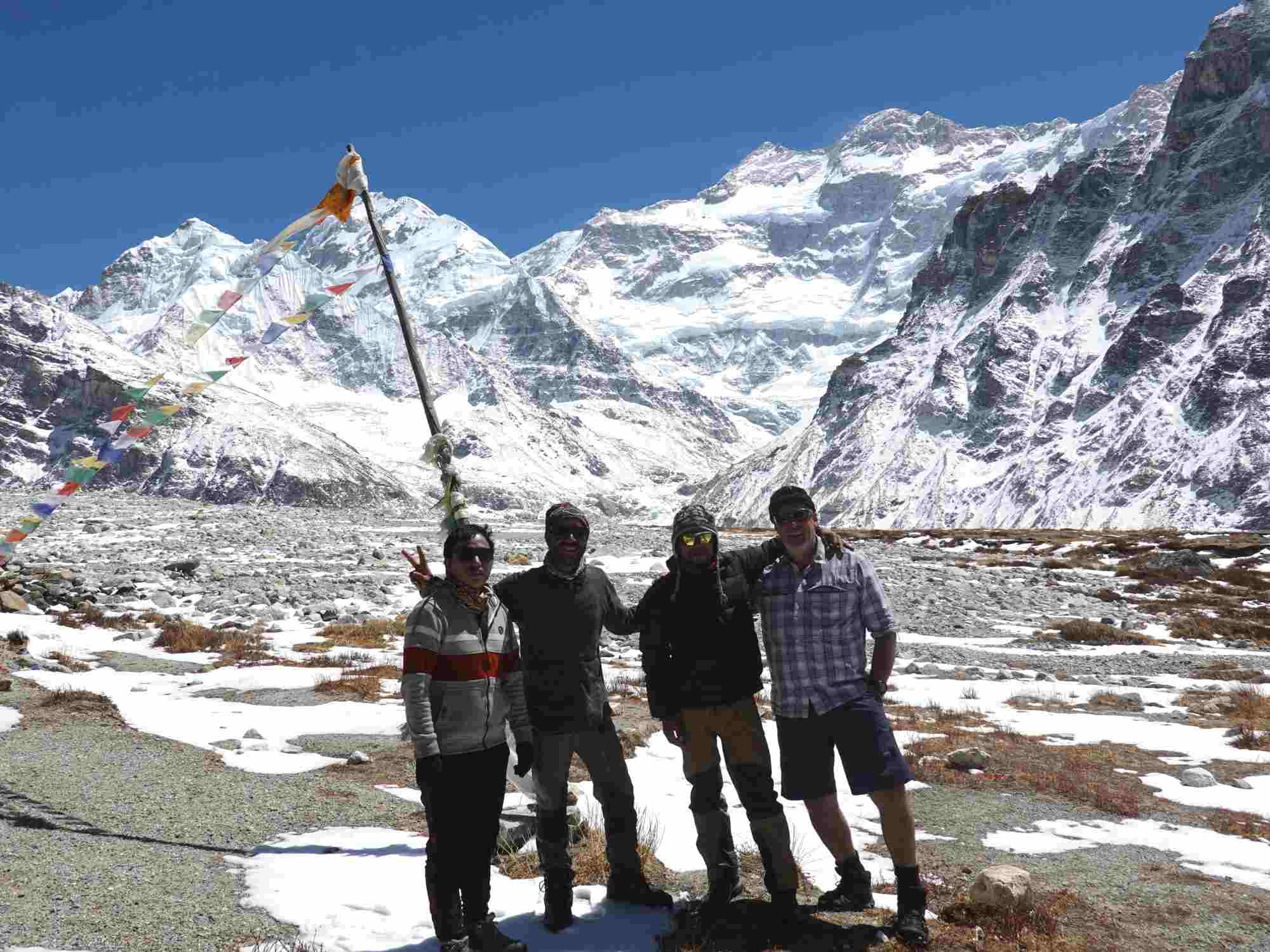
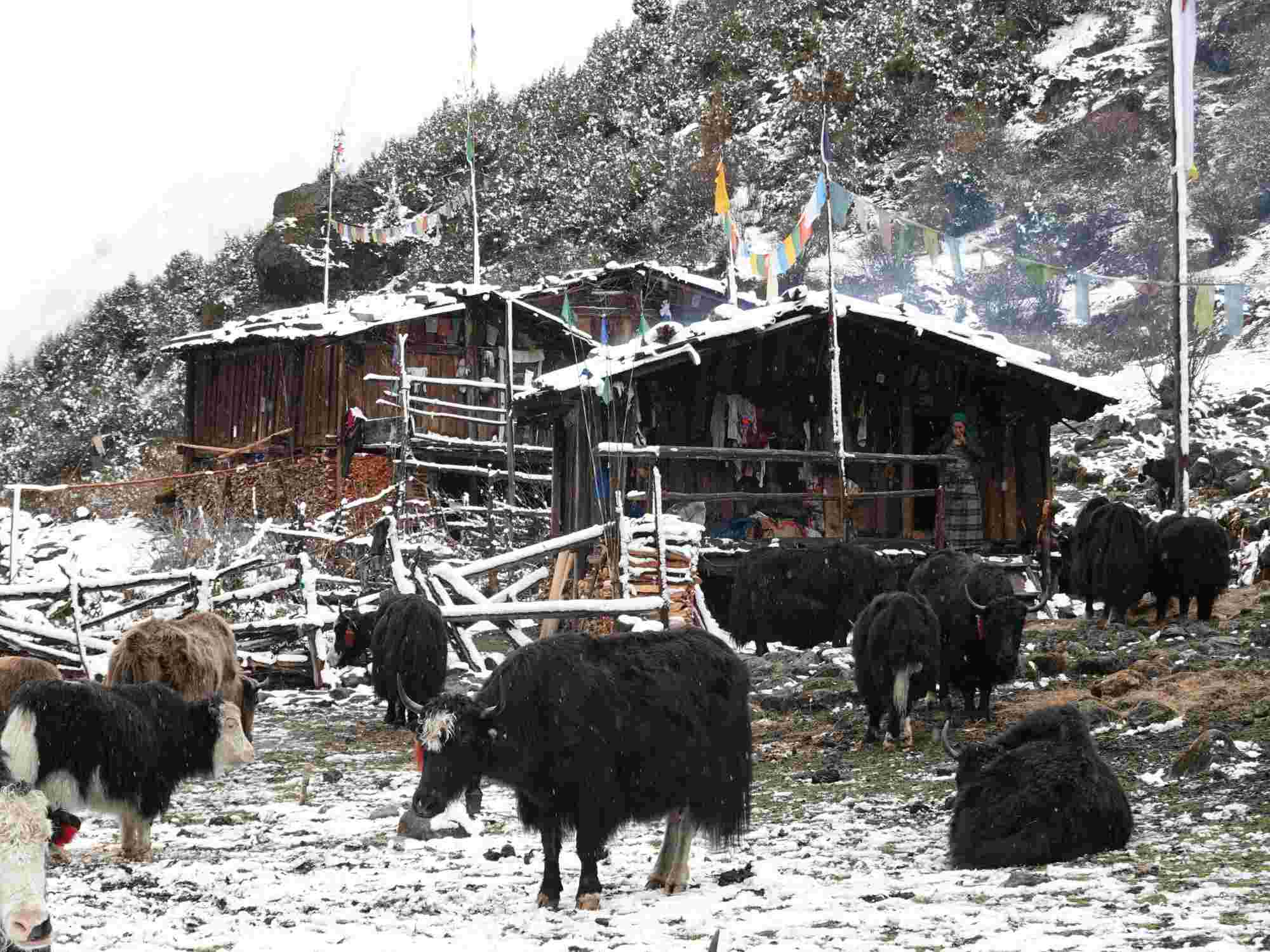
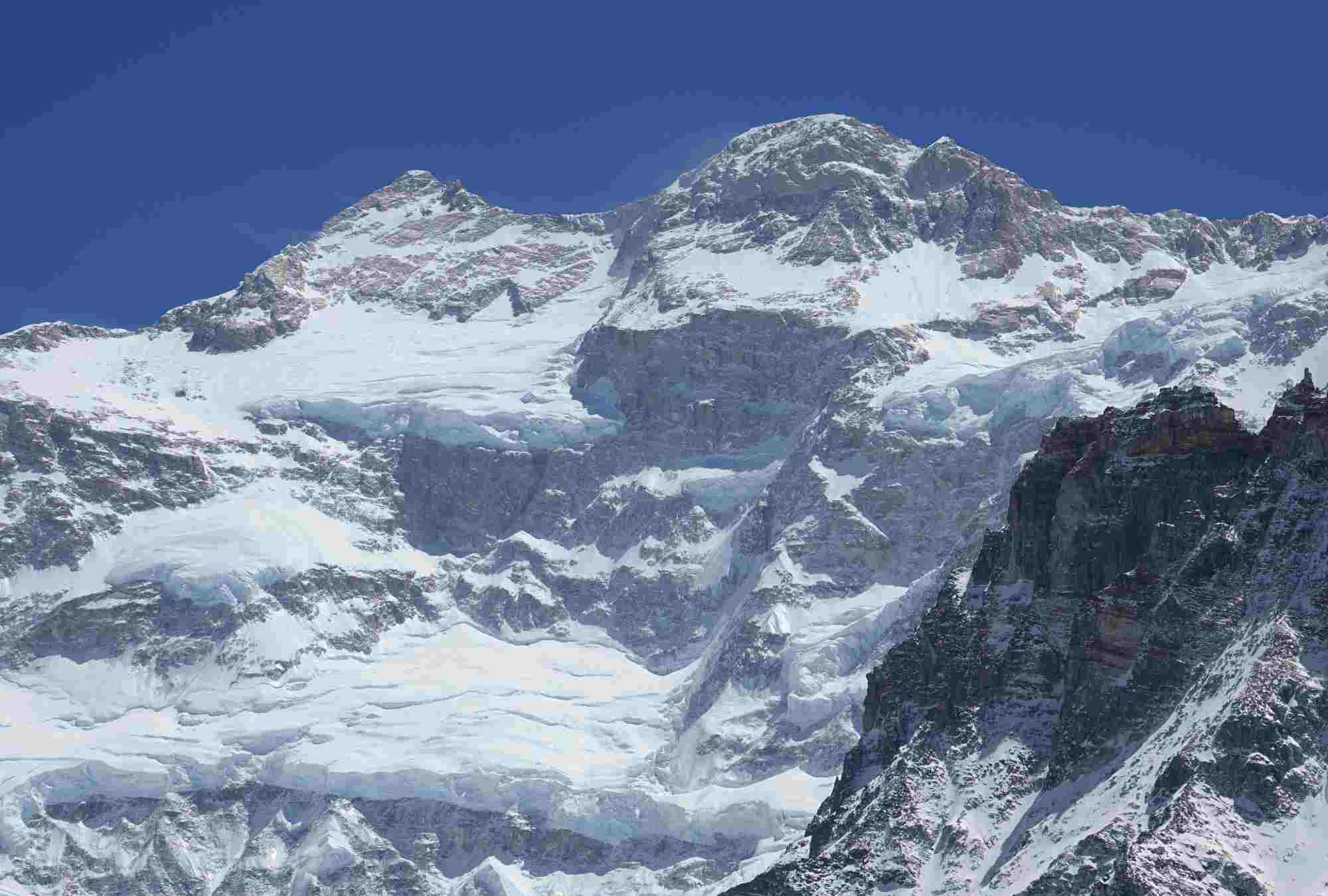
Quick Review
- Start:Kathmandu
- End:Kathmandu
- Duration:24 days
- Best Season: Apr-May and Oct-Nov
Introduction
The Kanchenjunga Circuit trek gives each adventure seeker an option to discover the unique landscape and visits both the north and south base camps of Kanchenjunga, the third-highest mountain in the world at 8,586m. It is a long trek itinerary passing deep into the remote mountain region on Nepal’s border near Sikkim, India , and Tibet. Kanchenjunga base camp trek offers scenery from the lush, green forest through to rhododendron, and oak forests and then goes at higher altitudes into the alpine zone. While passing through typical Nepali villages, you'll witness warm hospitality from Nepali people with Nepalese culture and life-style from Rai and Limbus to Tibetan Buddhist villages. This is mostly a remote area and high-altitude trek, So a good level of physical fitness and some previous trekking experience is required.
We go through Kanchenjunga Conservation Area, so a special permit is required to enter where you can also enjoy varieties of flora and fauna in pristine conditions. The main highlights of this trek are majestic views of high mountain peaks including Kanchenjunga, Yalung Kang (8,505m), Kambachen (7,903m), Everest(8,848m), Janu (7,710m), Jongsong (7,483m), Kabru (7,353m), Tent Peak (7,365m), etc. Months of Apr-May and Oct-Nov are the best for this trek.
Trek to Kanchenjunga Region is a unique experience where trekkers get right into the heart of the remote, and unspoiled part of eastern Nepal.
Kanchenjunga Circuit Trek starts with a scenic flight to Suketar. We pass through several Tamang and Limbu villages and stopping points such as Chirwa, Sakathum, Gyapla, Ghunsa, Lhonak, Pangpema North Base Camp, Sele La Pass Camp, Mirgin-La Pass, Sinelapache-La Pass, Cheram, etc.
A walk through the Kanchenjunga Conservation area lets us experience wildlife diversities and endangered species such as Impedance Pheasant, Shy Dragon, Red-Billed Blue Magpie, Amphibians, and Mammals including Snow-leopard, Red Panda, Himalayan Black Bear, Musk Deer, etc. If you are looking forward to making memories in high mountains and pristine environment, this trek is just what you are looking for.
Kanchanjunga Trek Highlights.
- Visit Mt. Kanchenjunga third highest mountain in the world
- Mixed culture and visit local people of Rai and Limbu culture
- Kanchenjunga Conservation Area where you can see wildlife, nature, Landscape many more.
- Varieties of flora and fauna of the region
- Opportunity to encounter endangered species of wild animals and birds
- Majestic mountain views from a close distance.
- Visit the world third highest mount Kanchenjunga Base Camp
- Cross several suspension bridges Over the Tamur river, and Yalung Khola many more.
Kanchenjunga Trek Difficulty:
The Kanchenjunga trek is the most difficult trekking route in Nepal among hundreds of other trekking routes in Nepal. Crossing the high passes called Sele – la of Kanchenjunga is the most difficult part of the trek, Sele – la is the connection to the two base camps of Kanchenjunga North and South. Beginning the trekkers will not feel that much difficult, we can combine with another normal trek in Annapurna or the Everest region of Nepal. When you rise up every day in a high altitude place you will feel slowly difficult.
Kanchenjunga trek trail is mostly rocky and narrow into the deep valley between two hills, and most of the time we will follow the river which comes from Kanchenjunga Mountain glacier. In addition, Kanchenjunga base camp trek food and accommodation are more basic than in Everest and Annapurna region. So it will make you feel difficult. But when you have done some treks already above 5000m in the mountains, you will not feel difficult. We Nature Explore Trek highly recommend those who want to do the trekking to Kanchenjunga please be prepared both physically and mentally. And choose an experienced, professional guide, and company.
The best time to do the Kanchenjunga Basecamp Trek
The best time to trek in Nepal is autumn and spring. And for the Kanchenjunga trek also same time is the best
The best time to do the Kanchenjunga trek is autumn mid-September, October, and November end and Spring Mid-march to end May every year.
Autumn and spring are the best seasons in Nepal for trekking and climbing the mountain because of the clear weather, and warm temperatures most of the day. Autumn always comes after summer season in Nepal. From mid-September, the rain will start to stop and the sunshine day will begin slowly – slowly. So autumn is the best season for trekking to Kanchenjunga.
Spring comes after winter, spring season is always popular for Expeditions to big mountains like Everest, Kanchenjunga, Lhotse, Makalu, Manaslu, Annapurna many more. So spring is the second biggest best season In Nepal after the autumn season in Nepal.
Food in Kanchenjunga Rgion:
The food menu is mixture of traditional local, Indian, American and continental cuisines and the foods will be all home-cooked, hygienic, fresh, tasty and nutritious. You'll get the best dishes available at the teahouse or lodge including popular Nepali Bhat, Pasta, Noodles, Potatoes, Vegetables, Fried rice, , Cereals, Eggs, Soup, etc and other Nepali food, Chinese Food, American food, Indian food, Continental food, etc. We recommend you to have lemon tea, hot lemon, garlic soup, green tea, ginger tea, etc to stay away from high-altitude problems. While you're in Kathmandu, there are an excellent range of hotels for all kind of budgets where you can have a variety of food.
Accommodation in Kanchenjunga Region:
Accommodations during the Kanchenjunga Circuit Trek are at basic teahouses which are necessarily teahouses but where you'll feel home and get a chance to explore Nepali culture and tradition with basic facilities including a hot shower at a low extra charge. It's hard to provide all the facilities in higher elevations but you'll find all the room simple and comfortable usually with two beds with a mattress blanket and pillows. During your stay in Kathmandu, accommodation is more luxurious you'll be staying in a single room with attached bathrooms, 24-hour hot water, power, TV, and a laundry facility.
Upon your arrival at the airport, our airport representative will be receiving you at the airport terminal and you'll be then transferred to your respective hotel in our private vehicle. Overnight stay.
Our trekking staff will pick you up from the hotel at 7:00 am and drop you to the airport for your flight to Biratnagar. Overnight stay.
We fly to Suketar early morning after breakfast. Suketar is the starting point of our trek. After reaching Suketar, we start walking on a fine trail through rhododendron and pine forest to reach Phurmbu for overnight stay.
We start our day with several more ups and downs before arriving at Chirwa. The village of Chirwa has several teahouses, shops and local markets and most of the houses are made from bamboo. Overnight stay.
The trail follows regular terraced fields and also come across some dense forest with varied landscape and forest of an oak tree. A gradual walk for 5 hours takes us to the beautiful village of Tapethok for an overnight stay.
The trek follows the route towards Tamor River passing through green fields along with some dense forest. With several ascends and descends, we reach Ghunsa River and cross it. The trail becomes a bit easier from here onwards to reach Sakathum for overnight stay.
Today's walk going to be a bit tough because of the tricky trail. We have to cross the river and follow the steep trail and descend again to cross the river again. We follow the trail and cross by Solima descends again to the river level. The hectic journey on the tricky trail brings us to Amjilosa for overnight stay.
The trail to Gyapla is a bit easier than then previous day's trail where we pass through the forest of bamboo, oak and Rhododendron forests and southwestern flank of Kanchenjunga becomes visible as we follow the route to Gyapla. Overnight at Gyapla.
Although the trip is a little bit difficult to Guhunsa from Gyapla uphill trek and we will be accompanied by majestic series of waterfall originated directly from the high Himalayas. You'll find different life in Ghunsa and people resemble Tibetan Natives. Overnight at a lodge in Ghunsa.
We'll have an acclimatization day at Ghunsa to prevent high altitude sickness. In the afternoon, we hike up to Lpasan La Monastery and back to Ghunsa for overnight stay. Ghunsa is a village with Sherpa people where you can interact with people, know about them, their culture, festivals, and tradition.
The trail follows meadows with an isolated forest of rhododendron and pine along the trail to Kambachen. We come across a majestic waterfall and also a tricky landslide section. After 4-5 hours of gradual walk, we reach Khambachen for an overnight stay.
The trail follows the rocky fields to Ramtang. We cross the moraines North West of the Kanchenjunga Glacier to Lhonak and on the way to Lhonak, you'll be rewarded by the spectacular views of Wedge Peak, Mera Peak, Nepal Peak, Twins, and others. Overnight at Lhonak.
The main peak of Kanchenjunga is not visible from Lhonak, so we will hike up to the Kanchenjunga north side Base Camp at Pangpema to have the best view of Kanchenjunga peak. During your walk, you will be rewarded with a view of Tent Peak, Twins, Nepal Peak, Cross Peak, etc. Overnight at Lhonak.
After witnessing some of the best peaks in the region, we descend back to Ghunsa. The trail goes through colorful rhododendron and pine forest with a spectacular view of Mera Peak, Cross Peak, and others. Overnight at Ghunsa.
There are prayer flags across the trail which is a steep and tough trail on the way to Sele La pass. We pass through the dense forest of moss, rhododendron, and juniper to reach Sele La Pass and then to Sele. Overnight stay at Sele.
Today's trek is tough and rewarding as we will cross five passes in a day including Tamo La, an unnamed pass, Mirgin La Pass, Sinion La, and another unnamed pass. Then we descend to Cheram for an overnight stay.
The trail to Tortong is pretty easy from Cheram. The trail passes next through Simbuwa Khola and enters a colorful forest of rhododendron. 6-hours of continues walk from Cheram to Tortong almost losing elevation of 1000m takes us to Tortong for an overnight stay.
Today, we continue towards Yamphudin, which is the biggest village in the southern section of Kanchenjunga. Upon your arrival at Yamphudin, you'll see people of Sherpa, Limbu, and Rai ethnic communities. Overnight stay at a lodge in Yamphudin.
After a continuous walk for a few days, we take much-needed rest at Yamphudin village. 1 day stat at Yamphudin villages allows us to interact with different ethnic groups of Sherpa, Magar, and Limbu communities. Overnight stay.
After 2 days at Yamphudin, we again start our walk by going downhill and cross a small bridge at Samekham. We follow the trail to Kabeli Khola which passes through the village of Mamangkhe. Upon your arrival at Mamangkhe, you can visit the Limbu Museum and Cultural Center on Mamangkhe. Overnight at Mamangkhe.
On the way to Khesewa, the trail passes through terraced fields and numerous local settlements. Overnight stay at Khesewa.
We descend down to Lalikharka which is the stopping point for a day. After reaching Lalikharka early, you can enjoy camping with friends, share memories and talk about the trek and unforgettable memories. Overnight stay.
After having a great day at Lalikharka with camping, we descend down to Suketar and spend overnight before going back to the same busy life. Overnight at Suketar.
Finally, we leave Suketar behind and fly back to Biratnagar and after lunch at Biratnagar, we fly to Kathmandu. Our travel representatives will help you to go to your next destination.
Cost Includes
- Airport peak and drop.
- 3-night Hotel in Kathmandu one on arrival and one in departure B/B
- Three times meals on trek (breakfast, lunch &, dinner)
- Hot drinks Tea or coffee.-Fresh fruit after dinner everyday
- Accommodation on a normal basis twin sharing room.
- Experience English-speaking guide.
- Porter. (Two people one porter) Each porter carries 25kg.
- Kanchenjunga conservation fee
- Kanchunjunga restricted area especially permit
- TIMMS CARD
- Rural municipality entrance fee.
- All the ground transportation
- Airfare from Kathmandu biratnagar – Kathmandu
- Treated drinking water.
- All the Ground transportation.
- First aid kit.
- Nature explore trek down jacket (refundable after the trip)
- Duffle bag for the trip (refundable after the trip
- Last night Dinner at Nepali kitchen with a culture dance show at Nepali typical resturants.
- Nature explore t- shirt.
- All the trip necessary documents
- Gov. Vat and tax
Cost Excludes
- Personal travel insurance
- International airfare
- Lunch and dinner in Kathmandu.
- Trekking equipment
- All type of beverage
- Extra expenses like Buttery charge, WIFI- Hot shower, Laundry during the trek.
- Tipping for staff.
-
1. CAN I GET NEPAL VISA ON ARRIVAL OR ONLINE ?
Yes, you can get an arrival visa at Trivubhan international airport. Visa cost per person US$25 for 15 days of single/multiple entries, US$40 for 30 days of single/multiple entries, US$100 for 90 days of single/multiple entries. Those individual passport holders from the member of the South Asian Association for Regional Cooperation (SAARC) do not need to pay a visa fee for 30 days
-
2.Does your company provide pickup and drop-off services from the airport?
Yes, we pick up and drop off from the airport. One of our nature explore trek's staff shall be weighing you at the arrival gate with your name details and transfer you to the hotel by private car/jeep and bus accordingly to group size.
-
3: PACKING LIST FOR KANCHENJUNGA Basecamp TREK ?
1. 1 trekking walking boots 2. 1 Medium size backpack 3. 1 Day pack 4. 1 Sleeping bag (15 - 20C) 5. 1 Down Jacket/Gore tax Jacket 6. 1 Light wind & water proof jacket 7. 1 Inner sleeping sheet 8. 2 Long sleeve T-shirts 9. 1 Water bottle 10. 1 Pair gaiters/over trousers 11. 1 Pair sport shoes or sandal 12. 2 Pairs light weight trousers 13. 1 Pair shorts 14. 1 Fleece / warm sweater 15. 2 T-shirts 16. 2 Pair’ light socks 17. 3 Pairs heavy wool socks 18. 1 Sweatshirts / light sweater 19. 1 Torch & spear batteries 20. 1 Swimming costume / bathing suits (not for Everest region) 21. 1 Medium size towel 22. 1 Washing kit including washing powder, small clothesline and pegs, insect repellents etc. & personal toiletries 23. Moleskin for blister 24. Toilet paper, biodegradable soap/shampoo (toilet paper you can buy every place in Nepal) 25. Personal medication. (if you are taking rebury otherwise for high altitude we provide) 26. Underwear (including thermals) 27. Warm hat/ gloves 28. Sunglasses, sun hat and sun cream 29. Spear plastic bags for wrapping clothes Note: even high altitude medication you can bring in your favor like Diamox otherwise Nepalese taste we do have always (but we treat naturally all the time go slowly and drink lots of water
-
4. Kanchenjunga Trek Difficulty:
The Kanchenjunga trek is the most difficult trekking routs in Nepal among hundreds of other trekking routes in Nepal. Crossing the high passes call Sele – la of Kanchenjunga is the most difficult part of the trek, Sele – la is the connect to the two base camp of Kanchenjunga North and South. Beginning of the trekkers will not feel that much difficult, we can combine with other normal trek an Annapurna or Everest region of Nepal. When you rise up every day in high altitude place you will feel slowly difficult. Kanchenjunga trek trail is mostly rocky and narrow into the deep valley between two hills, and most of the time we will follow the river which is come from Kanchenjunga Mountain glacier. Addition Kanchenjunga base camp trek food and accommodation is more basic than an Everest and Annapurna region. So you it will make you feel difficult. But when you have done some treks already above 5000m higher in mountain, you will not feel difficult. We nature explore trek highly recommend those who want to do the trekking to Kanchenjunga please be prepared both physically and mentally. And chose an experience, professional guide and company
-
5. HOW CAN WE REACH TO KANCHENJUNGA TREK ?
If you want to go by bus it takes 2 days to reach at the trekking stating point from Kathmandu. And if you go by airplane from Kathmandu to Suketar direct flight then it takes one hour flight. Basically you will start to walk from here. Ends of the trek you can retrun to Kathmandu by drive in Jeep or bus. On the way back to Kathmandu you can also visit Ilam tea garden and then take airplane from Badrapur or Biratnagar to Kathmandu. Or if you are with limited time than you can take flight from Suketar to Kathmandu, same place as you flu from Kathmandu beginning of the trek.
-
6. HOW MUCH COST FOR KANCHENJUNGA TREK ?
Normally cost start from 1500 USD to 2200 USD including Guide , Porters , local sharing transportation , Food , Accommodation , Kanchenjunga restricted permits and Kachenjunga conservation permits many more. If you take airplane and private transportation then it will be extra.
-
7. WHEN IS THE BEST TIME DO THE KANCHENJUNGA TREK ?
Best time to trekking in Nepal is autumn and spring. And for Kanchenjunga trek also same time is the best The best time to do the Kanchenjunga trek is autumn mid-September, October, and November end .and Spring Mid-march to end May every year. Autumn and spring are the best season in Nepal for trekking and climbing the mountain because of the clear weather, warm temperature most of the day. Autumn always come after summer season in Nepal. From mod September the rain will start to stop and sunshine day begins slowly – slowly. So autumn is the best season for trekking to Kanchenjunga. Spring come after winter , spring season always popular for Expeditions to big mountains like Everest ,Kanchenjunga , Lhotse , Makalu , Manaslu , Annapurna many more. So spring is second biggest best season In Nepal after autumn season in Nepal.
-
8. DO I NEED TRAVEL INSURANCE FOR KANCHENJUNGA TREK ?
Yes travel insurance is important to have with you during your travel in Nepal encasing of emergency use. If you lost the bag or emergency if you have any problems during the trek and need to emergency evacuate from mountain to Kathmandu then you can claim for insurance company. For your safety and security we would highly recommend you to have insurance for Kanchenjunga trek.
-
9. DO I NEED A GUIDE FOR KANCHENJUNGA BASECAMP TREK?
Yes guide is compulsory for Kanchenjunga Basecamp trek, when we obtain your Kanchenjunga base camp trek restricted area permits at immigration office in Kathmandu without guide they don’t accept your documents. For your safety and security during the remote region Nepal we highly recommend you to go with guide. Guide knew the trail and he will help you to communicate with local people, you will have more chance to know about region, culture, landscapes of region, religions when you trek with guide. Our guide is well train by professional teacher and they have deep knowledge about the Kanchenjunga region. Some of our guide is also from the same region. So it will be easier for them to guide in the same their hometown.
-
10. DO I NEED PERMITS FOR KANCHENJUNGA BASECAMP TREK ?
Yes permits are compulsory to trek in Kanchenjunga region Nepal. You need two types of permits. Restricted area permits and Kanchenjunga conservation permits. For restricted permits you have to go Nepal immigration office at Kalika sthan, Kathmandu through local trekking agency. Without trekking agency they will not accept your documents. So when you plan trekking in Nepal in far, remote, and restricted area of Nepal you most go with local trekking agency.
-
11. HOW COLD IS KANCHENJUNGA BASECAMP TREK ?
Beginning of the trek, you will not feel cold, its nice subtropical climate. It will be 20 to 25 Celsius, but upper part of the trek in evening and morning it will be 10 to 15 in early autumn. Late autumn it will be -7 to 10. Spring time same , beginning of the trek warm hot , and upper part of the trek in early spring 10 to 13 and mid of the season 15 to 20 Celsius.
-
12. CAN I GET WIFI – INTERNET AND MOBILE SERVICE IN KANCHENJUNGA BASECAMP TREK ?
Beginning of the trek you will have a good mobile signal and mobile date will work. You will also get Wi-Fi in certain place. And upper part of the trek till the date there is no Wi-Fi or mobile service. For emergency contact we can use local Telephone phone from Nepal governments.
-
13: FOOD AND ACCOMMODATION IN KANCHENJUNGA BASECAMP TREK ?
Kanchenjunga basecamp is one of the remote, challenging difficult trekking routes in Nepal. Food and Accommodation will be basic compare to Everest region and Annapurna and Langtang region trekking area. In Kanchenjunga basecamp trek you will get basic room. Most of the place already builds small tea house and some place still you have to sleep in homestay. Food , still you can chose from basic menu card , but you will not see many items ,but still you can eat , local organic food, rice , bread, potato , fry noodles , different types of vegetables and meet in lower part of the trek. Compare with Everest region and Annapurna region trekking routes Kanchenjunga region is basic and simple but nice experience to have local food and sleep in basic rooms in your life time.
More Related Packages
- 1. Safety: The agency prioritizes the safety of its clients and has strict safety measures in place for all treks.
- 2. Comfort: The agency provides comfortable accommodation, hygienic food, and necessary equipment for a successful and enjoyable trek.
- 3. Support for local communities: The agency supports local communities by promoting sustainable tourism practices and contributing to local economic development.
- 4. Affordable pricing: The agency offers competitive pricing for its trekking packages, making it accessible to a wider range of clients.
- 5. 99 percent Excellent review on TripAdvisor.
- 6. 100% Tailor made and personalized holidays which means you have the flexibility to make changes to an itinerary to ensure your holiday is, as you want it to be.
- 7. Customer Service 24/7 before and during your holiday including an emergency contact telephone number.
- 8. Our Aim is to be real people, helping to plan your Holiday
- 9. Easy Payment Options

